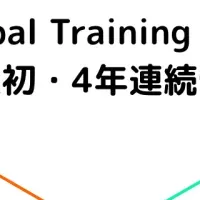
The Embodied AI Market: A Look at Its Projected Growth to $23.06 Billion by 2030
The Rise of the Embodied AI Market
The global market for embodied artificial intelligence (AI) is rapidly evolving, with expectations to escalate from USD 4.44 billion in 2025 to an astonishing USD 23.06 billion by 2030. This growth trajectory of an impressive compound annual growth rate (CAGR) of 39.0% is fueled by significant advancements in machine autonomy that empower robots to undertake complex, adaptive tasks with reduced human supervision.
The Role of Embodied AI
Embodied AI is crucial for facilitating seamless mobility in autonomous systems. This technology enables systems like delivery robots and self-driving vehicles to develop spatial awareness, engage in dynamic learning, and execute contextual decision-making. Leading companies such as SoftBank Robotics, ABB, TOYOTA, KUKA AG, and Boston Dynamics are at the forefront, continuously driving innovations that position the market for robust expansion in the years ahead.
Market Overview and Key Segments
Market Growth and Dynamics
The report by MarketsandMarkets forecasts that the embodied AI market will expand significantly over the next decade, with various segments contributing to its growth. Notably, the Level 2 Intermediate Embodiment segment is expected to capture the largest market share by 2025. This segment thrives due to the increasing deployment of AI agents capable of perceiving their environments, learning from diverse datasets, and adapting to evolving tasks. These AI-driven systems are designed to balance autonomy with controllability, making them ideal for applications in logistics, manufacturing, and healthcare—fields where real-time adaptability is paramount.
Use cases for these systems include smart robots in warehouses, robotic surgical assistants in medical facilities, and adaptive inspection bots in manufacturing plants. Leading firms like ABB, KUKA, and Boston Dynamics are implementing learning-enabled robots that deliver context-aware behavior to enhance operational efficiency. Such advancements in techniques like reinforcement learning and real-time sensor integration are broadening the horizons for embodied AI applications.
Logistics and Supply Chain as a Growth Driver
The logistics and supply chain sector is anticipated to register the highest growth rate in the embodied AI market during the forthcoming years. The increasing complexity of global supply chains and the incessant demand for prompt consumer delivery are compelling businesses to adopt AI solutions such as autonomous mobile robots (AMRs) and AI-enabled systems for inventory management. Intelligent systems employ advanced perception and motion planning technologies to navigate bustling environments efficiently, improving accuracy in order fulfillment while decreasing reliance on manual labor.
Key players like Amazon Robotics and Locus Robotics are leading this transformation, deploying extensive fleets of AI robots across warehouses in North America, Europe, and Asia, thereby revolutionizing the way services are rendered in the logistics sector.
Regional Insights
Asia Pacific's Dominance
The Asia Pacific region is predicted to dominate the embodied AI market by 2030. This growth is largely attributed to the region's convergence of cutting-edge robotics, AI, and the surging demand for practical applications across crucial sectors. Countries such as Japan, China, South Korea, and India are leveraging embodied AI in industries including manufacturing, logistics, and healthcare. The robust foundation of the electronics and semiconductor industries in countries like Taiwan and Japan is vital in supporting real-time sensor intelligence necessary for successful embodied AI operations.
Emerging labor shortages and the aging population in several nations are driving further adoption of embodied AI in service provision roles, adjustment in caregiving, education, and customer interactions. The proactive AI strategies endorsed by various governments and the burgeoning startup ecosystem position Asia Pacific as a leader in the global embodiment AI landscape.
Conclusion
With a promising outlook and strong potential for growth, the embodied AI market is poised to undergo significant transformation over the next several years. The continual innovation by leading technological firms and the integration of advanced robotics will likely pave the way for unprecedented advancements in various sectors.
As the industry gears up for this leap, stakeholders and businesses alike must stay attuned to the developments in embodied AI technologies to harness their full potential. The future is exciting, where robots and humans collaborate seamlessly to create a smarter, more efficient world.
Topics Consumer Technology)










【About Using Articles】
You can freely use the title and article content by linking to the page where the article is posted.
※ Images cannot be used.
【About Links】
Links are free to use.